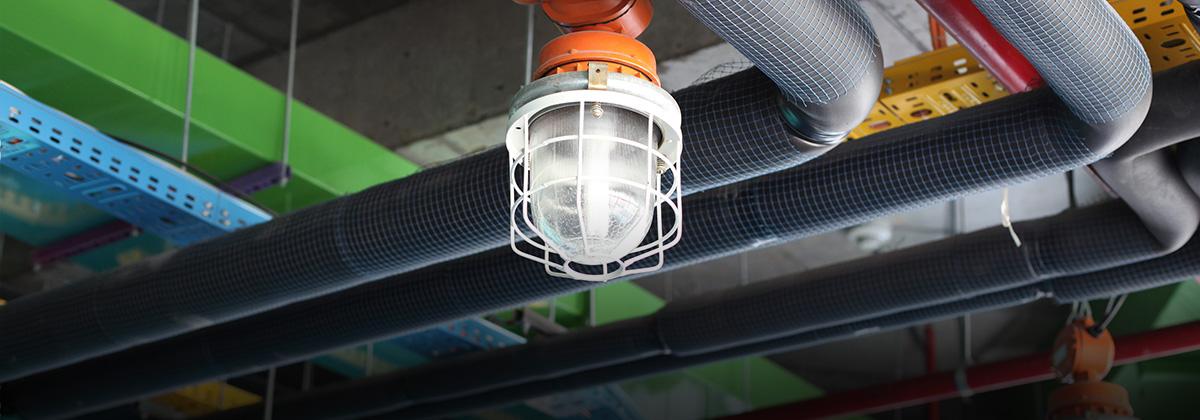In an uncertain climate it is more important than ever for manufacturers to take a more strategic approach to buildings maintenance costs
From sprawling, hangar-style factories through to units scattered around industrial estates, through to small, compact workshops in or on the edge of town, Britain’s Original Equipment Manufacturer (OEM) built estate is vast and diverse.
Although the UK manufacturing sector is considerably smaller than in its heyday of the 1960s, Britain is still one of the largest manufacturing nations in the world. In fact, its global standing in the manufacturing league tables is better now than it has been for several years.
The cost pressures on manufacturing businesses vary greatly from sector to sector, from plant and labour costs to the price of raw materials or exchange rates. But one consistent challenge is around the Indirect procurement cost of Industrial supplies for Maintenance, Repair and Operations (MRO) procurement. Whether it’s for keeping production lines running or ensuring buildings stay open, operating and functioning, the day-to-day purchasing of mechanical, plumbing and electrical spares, replacements and components is an always-present consideration.
"Manufacturers are always under pressure to run efficiently, and maintaining and improving buildings is a challenge they all face"Richard Graham, Industry Sector Manager, RS
As Richard Graham, Industry Sector Manager at RS, points out: “Manufacturers are always under pressure to run efficiently and cost-effectively, and maintaining and improving buildings and machinery is a challenge they all face. “As with any business, they need to look at the cost versus benefits involved when they decide what they are going to do – some maintenance is essential, some comes under the heading of ‘nice to have, but does it make financial sense?’.”
With a continued sense of disquiet around business rates, Graham explains that the current system can effectively penalise businesses for making buildings improvements, because it increases the hypothetical rental value, thereby meaning companies have to pay higher rates.
Ideally, Graham argues, keeping lights working, reducing energy use (electricity, heating, water but also often the air used in pneumatic equipment), managing air-conditioning, extraction or filtration systems should be stripped out of rates system. Nevertheless, becoming smarter – more efficient and strategic – in your buildings maintenance MRO procurement can pay dividends as it reduces running costs, which compound over time.
Take control of spending
Another area where savings can be achieved is around contract compliance: “With worries over budgets always a concern for businesses, it is vital to be reducing ‘maverick’, uncontrolled and spot buying,” says Graham.
“Having a procurement strategy is about consolidating your spending with fewer suppliers, making the ordering process easier, perhaps by looking at eProcurement solutions, and by reducing the working capital sitting in your stores.” The challenges of managing MRO is explored in depth in the 2020 Indirect Procurement Report - Evolution of MRO, jointly produced by RS and the Chartered Institute of Procurement & Supply (CIPS).
“At RS, we stock ovre 700,000 items, which are available for delivery the next day. Often, we can get them to sites quicker than anyone else and potentially more quickly than the engineer who is trying to locate them in his storeroom,” Graham points out.
“It’s easier to make the case for keeping tight control on MRO spend for plant and other operationally critical machines, but it’s just as important to look at MRO spend on buildings. Many organisations have numerous, large buildings and over the course of a year spend significant amounts on maintaining these,” agrees Helen Alder, Head of Knowledge at CIPS.
"It's important to prioritise MRO requirements so that critical areas, which might affect your overall operations, can be serviced in a timely manner"Helen Alder, Head of Knowledge, The Chartered Institute of Procurement & Supply
“With buildings maintenance, it’s important to prioritise MRO requirements (either if you have an in-house facilities management team, or it’s outsourced) so that critical areas, whether that’s lighting, plumbing, air conditioning and so on, which might affect your overall operations, can be serviced in a timely manner.
“This comes down to working with suppliers to identify key MRO products and ensuring you have a list of key suppliers that will be able to provide parts as and when you need them,” she adds.





